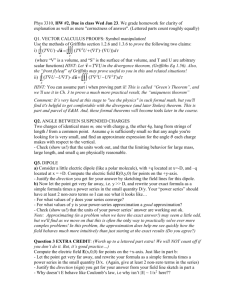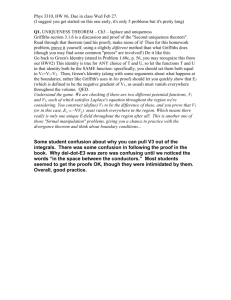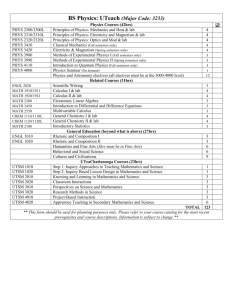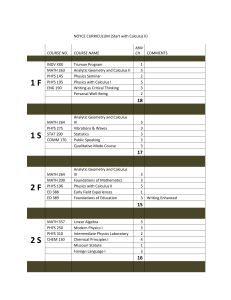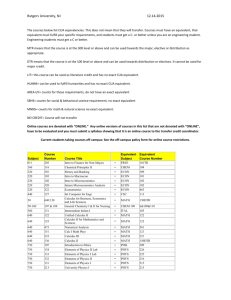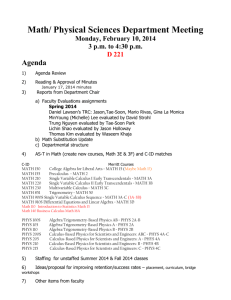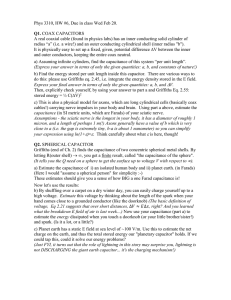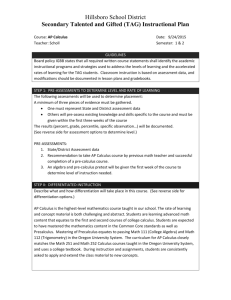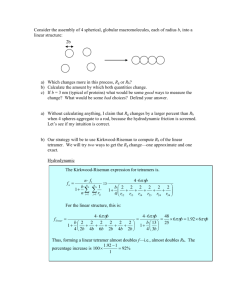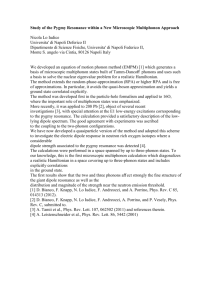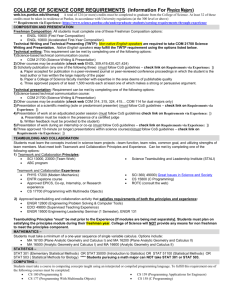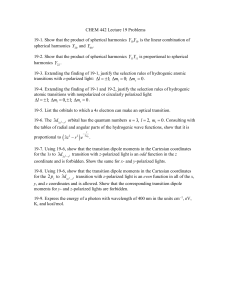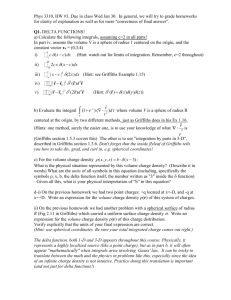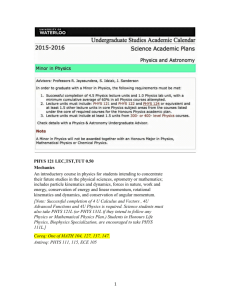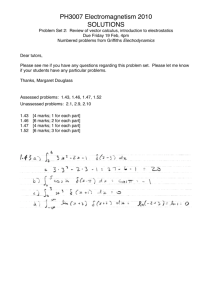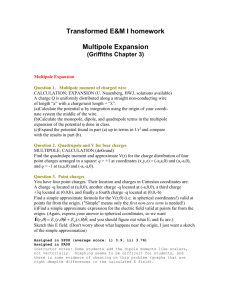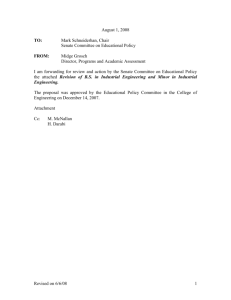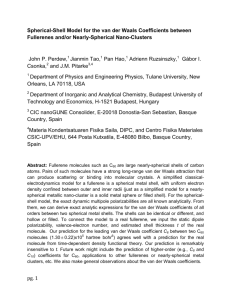HW2_v2
advertisement
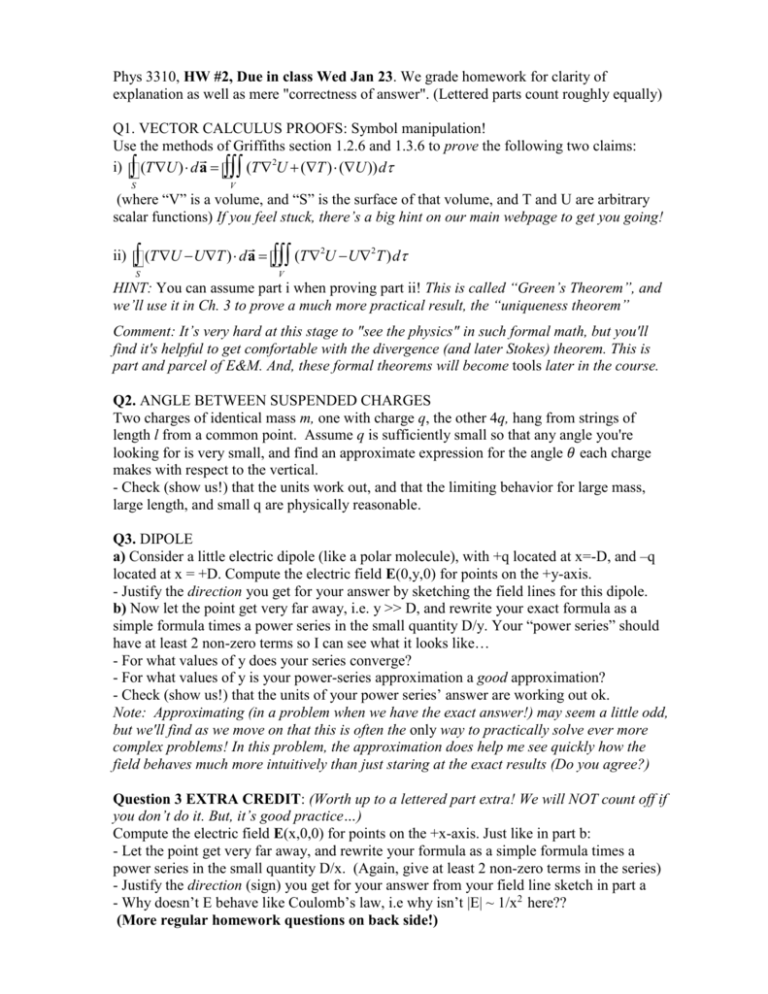
Phys 3310, HW #2, Due in class Wed Jan 23. We grade homework for clarity of explanation as well as mere "correctness of answer". (Lettered parts count roughly equally) Q1. VECTOR CALCULUS PROOFS: Symbol manipulation! Use the methods of Griffiths section 1.2.6 and 1.3.6 to prove the following two claims: i) ò (TÑU)× da = òòò (TÑ2U + (ÑT )× (ÑU)) dt S V (where “V” is a volume, and “S” is the surface of that volume, and T and U are arbitrary scalar functions) If you feel stuck, there’s a big hint on our main webpage to get you going! ii) ò (TÑU -UÑT )× da = òòò (TÑ U -UÑ T ) dt 2 S 2 V HINT: You can assume part i when proving part ii! This is called “Green’s Theorem”, and we’ll use it in Ch. 3 to prove a much more practical result, the “uniqueness theorem” Comment: It’s very hard at this stage to "see the physics" in such formal math, but you'll find it's helpful to get comfortable with the divergence (and later Stokes) theorem. This is part and parcel of E&M. And, these formal theorems will become tools later in the course. Q2. ANGLE BETWEEN SUSPENDED CHARGES Two charges of identical mass m, one with charge q, the other 4q, hang from strings of length l from a common point. Assume q is sufficiently small so that any angle you're looking for is very small, and find an approximate expression for the angle 𝜃 each charge makes with respect to the vertical. - Check (show us!) that the units work out, and that the limiting behavior for large mass, large length, and small q are physically reasonable. Q3. DIPOLE a) Consider a little electric dipole (like a polar molecule), with +q located at x=-D, and –q located at x = +D. Compute the electric field E(0,y,0) for points on the +y-axis. - Justify the direction you get for your answer by sketching the field lines for this dipole. b) Now let the point get very far away, i.e. y >> D, and rewrite your exact formula as a simple formula times a power series in the small quantity D/y. Your “power series” should have at least 2 non-zero terms so I can see what it looks like… - For what values of y does your series converge? - For what values of y is your power-series approximation a good approximation? - Check (show us!) that the units of your power series’ answer are working out ok. Note: Approximating (in a problem when we have the exact answer!) may seem a little odd, but we'll find as we move on that this is often the only way to practically solve ever more complex problems! In this problem, the approximation does help me see quickly how the field behaves much more intuitively than just staring at the exact results (Do you agree?) Question 3 EXTRA CREDIT: (Worth up to a lettered part extra! We will NOT count off if you don’t do it. But, it’s good practice…) Compute the electric field E(x,0,0) for points on the +x-axis. Just like in part b: - Let the point get very far away, and rewrite your formula as a simple formula times a power series in the small quantity D/x. (Again, give at least 2 non-zero terms in the series) - Justify the direction (sign) you get for your answer from your field line sketch in part a - Why doesn’t E behave like Coulomb’s law, i.e why isn’t |E| ~ 1/x2 here?? (More regular homework questions on back side!) Phys 3310, HW #2, Due in class Wed Jan 23. We grade homework for clarity of explanation as well as mere "correctness of answer". (Lettered parts count roughly equally) Q4. DISK OF CHARGE: a) Find the electric field a distance z along the axis from a disc of radius R0 and uniform charge density 𝜎. [Hint: a disk is just a bunch of concentric rings of charge dq, right?] b) Explicitly calculate the limiting forms of your solution at very small and at very large z (compared to R0) and discuss. (Note: “limiting form” means “how it behaves as a function of distance”. So e.g. at large z, don’t just say “it goes to zero” (if that’s what you think happens). Tell us how, functionally, it vanishes. (like 1/z? like e-z? Something else?… ) Comment: The disk of charge is an idealization of many physical devices: a capacitor plate, a small patch of any surface... Once you have solved this ideal problem, you will be able to apply it (many times this term!) to realistic situations. Q5. SPHERE OF CHARGE: a) (Let’s start with a followup to Tutorial 1, part iv, from class) Nothing fancy here, this is a “quicky”, no real calculations to do. Just practice, and could be useful in the next part! Given the figure below (charge Q at r’, point P at r=(0,0,z)): Express the Cartesian ⃗⃗ = (𝓻𝒙 , 𝓻𝒚 , 𝓻𝒛 ), using spherical coordinates. (This components of Griffith’s curly R, 𝓻 ⃗⃗ in a spherical coordinate basis. It means simply write each of the does NOT mean to write 𝓻 ⃗⃗ using the appropriate primed spherical variables.) Cartesian components of 𝓻 ^ z P ’ = +Q r’ ^ y = ’ ^x = b) Find the E field a distance z above the center of a spherical surface of radius R (Fig 2.11 in Griffiths: it’s a SHELL, not a SOLID) which carries a uniform surface charge density . Do this by explicit integration (i.e. starting from Griffiths Eq. 2.7), please. (I know there are easier ways, this is for practice) Just treat the case z>R (outside the sphere). Express your answer in terms of the total charge q on the sphere. Hint: I got an integral which I needed to look up - use Mathematica, or some similar tool! Also, be careful, when you get a square root, to take the positive root: R 2 + z 2 - 2Rz = (R - z)if R>z, but it’s (z-R) if R<z. c) Check your answer using knowledge from Phys 1120 and intuition (briefly discuss - what should it be?) What would you expect the answer should be inside the sphere? Why? (Historical note: Newton solved part a using geometry (no calculus!!) This geometric proof is tricky and still excites debate: see R. Weinstock Am.J.Phys., 52, (1984), p. 883; H. Erlichson, Am.J.Phys.58, (1990) p. 882. Newton thought calculus should be kept secret, and held up publication of Principia until he could work out these non-calculus proofs. He published calculus much later, about the same time as Leibniz published his calculus.
